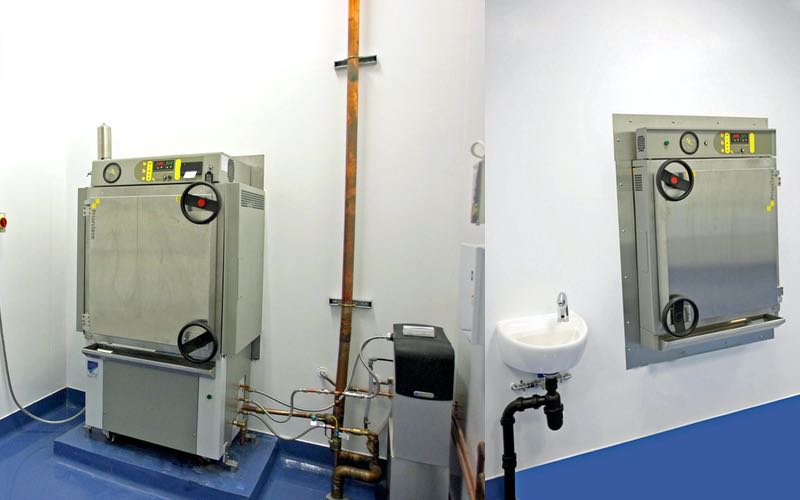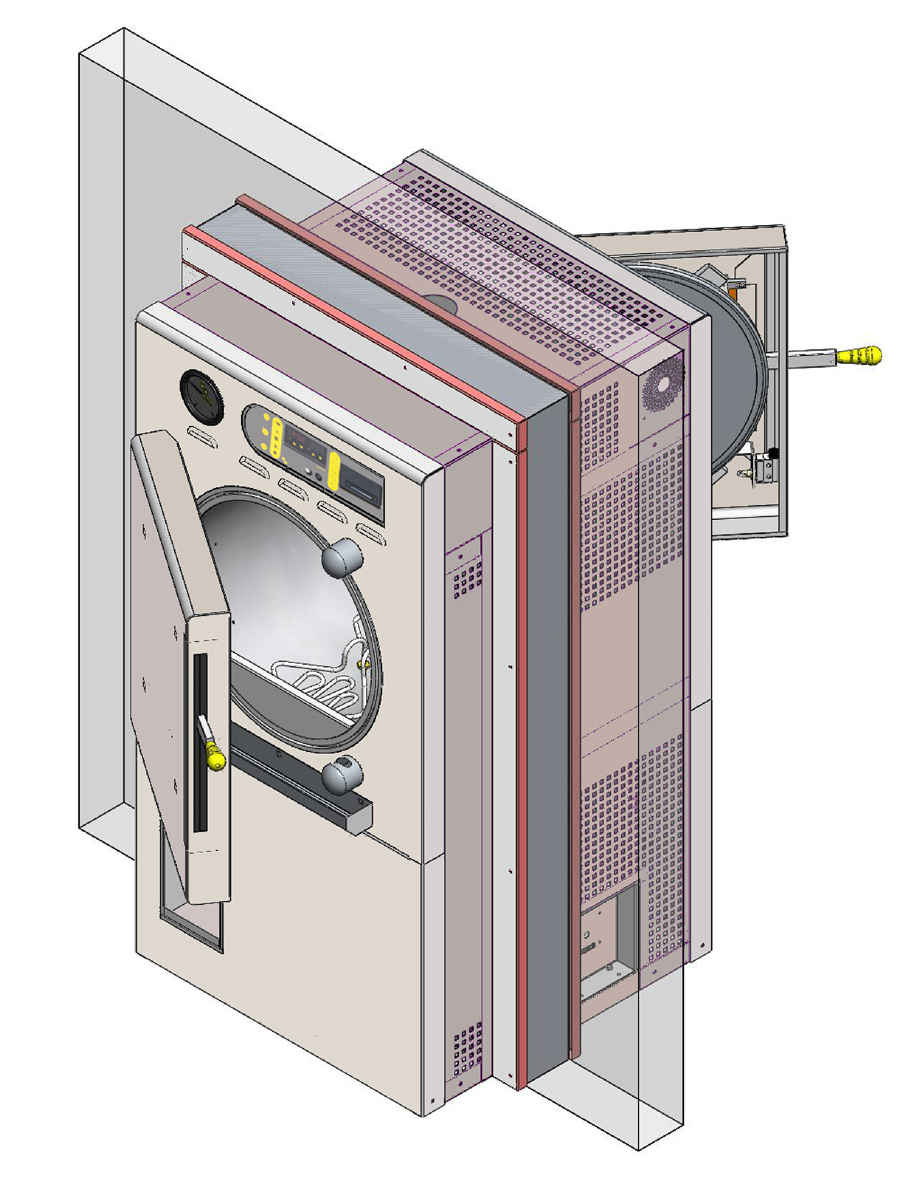Coronavirus has had a major impact on our lives. It has required us to alter our daily routines, whether at home, work, even play. It has impinged, for some us irrevocably, on so many facets of the way we continue to live our lives, disrupting daily routines. It has also had a major impact on research laboratories in finding a solution to combat this most virulent strain.
As research intensifies it is essential that the work is carried out in a safe and controlled environment.
Viruses are the smallest of all the microbes. They are said to be so small that 500 million rhinoviruses (which cause the common cold) could fit on to the head of a pin. They are unique because they are only alive and able to multiply inside the cells of other living things.
This highlights the need for extreme levels of care to prevent microbes from spilling out into adjacent 'common' areas.
Because of the seriousness of handling materials, BSL-3 labs are “slow labs”
In the US, the CDC designates that BSL 3 (biosafety level 3) labs are needed to handle microbes that can become aerosolised and cause major illness, injury, or death. These labs are designated suitable for research and diagnostic work involving various microbes which can cause serious and potentially lethal disease via the inhalation route. This includes coronavirus.
Because of the seriousness of handling materials, BSL-3 labs are "slow labs". This means places where workers plan their workflows carefully in advance. They work methodically, from checklists, one step at a time.
Essential PPE and biological safety cabinets enclose and contain contaminated surfaces of all kinds within the lab. Staff are medically monitored and safety processes carefully defined.

Brunel University
Slow and easy wins the race
It is common practice for researchers to build an inherent slowness into the BSL-3 workflow. As Dr Mark Denison (Vanderbilt's University Medical Center) explained in a recent episode of Radio Lab, "No one can tell you to speed up when you're in the BSL-3.lab."
"Work on the novel coronavirus is too urgent to go fast... Work in BSL-3 is hyper methodical. You do one thing at a time. You do everything with an intentionality that is sort of 'anti' how we're trained to move forward fast and do lots of things in a day. Everything is written down, you follow the guidelines, you follow them one step at a time. You can't answer a phone, you can't respond to an email. The world sort of comes to a stop while you're working in there."
Cleanroom setups that require BSL 3 are becoming increasingly more common beyond just pathogen containment.
For such laboratories pass-through autoclaves provide sterile routes into and out of these sealed laboratory environments, reducing the risk of compromised laboratory standards, contamination, or infection.
Maintaining lab sterility
Every lab is unique in what processes and procedures take place - some requiring a more sterile working environment than others, there may even be air locks for staff to pass through, extracting, cleansing and renewing the air, a system in operation where high risk conditions are the norm. In a similar manner, some laboratories need to have a secure, clean exit path for its waste media so that it can be safely discarded once its use has ended.

A double door autoclave
When Brunel University required a double-door/pass-through steam sterilisers as part of a new CAT III containment laboratory suite it was sourced from dedicated laboratory autoclave manufacturer, Priorclave.
A 350l double-door autoclave was supplied and installed within the Heinz Wolf building, a Centre for Infection, Immunity and Disease Mechanisms, and a School of Health Sciences with a CAT II and CAT III Research Facility for secure decontamination of hazardous waste.
The autoclave was designed and built to a unique specification, supplying a 350l double-ended autoclave with electrical heating, vacuum facility, a printer and an exhaust filtration system for the containment of any hazardous pathogens.
The design gave Brunel University a more cost-effective solution, the benefit of an electrically heated machine over one with a steam generator is that it uses less power, only switched on when in use.
Since the autoclave is used for de-contamination of hazardous material prior to its release from the containment suite, it was imperative that the double-door design had both ends of the autoclave isolated. Sealed at the point of passing through the wall by means of a bulkhead, interlocks preventing both doors being open at the same time as this would obviously breach the integrity of the site.
The interlocks prevent the door at the unloading end from being opened until the sterilisation cycle has been successfully completed and the load is safe to pass into the unloading end.
It is also standard with Priorclave machines that it is not possible to release the loading door until the unloading door has been opened and subsequently closed and locked. The steriliser supplied to Brunel's Centre for Infection, Immunity and Disease Mechanisms has an added benefit of a programmable key-lock that gives the facility the ability to use the autoclave as a single door autoclave at any end.
Comparatively speaking
Throughout the world many organisations specify medical grade autoclaves for industrial applications. These are generally more expensive and require more water to complete the sterilising process.
By using a 450 litre autoclave green credentials are strengthened, slashing significantly energy costs associated with running a sterilisation process for compost and vegetation with a massive 90% reduction in water usage. Coupled with other benefits the laboratory autoclave has given the department a very economical sterilisation capability.
The interlocks prevent the door at the unloading end from being opened until the sterilisation cycle has been successfully completed
Side by side analysis of running costs with another autoclave has showed an overall saving of 56%, the major contribution to this massive saving is associated with cost of water supply and disposal, amounting to a reduction of 88% and 89% respectively. Since the University is in a hard-water area Priorclave fitted a water softener and again a very big reduction of 92% saving in salt requirements has been achieved.
The previous autoclave, although only a 350 litre machine, had a much larger footprint than the new upgrade. It also required a separately housed 45kW generator that ran constantly 24/7 to provide the required level of steam for sterilisation. By replacing this with the Priorclave autoclave it has given the laboratory more free space within the actual laboratory as well as create a totally free room which housed the generator.
The autoclave is called into action two to three times a day, five days a week and by heating water-on-demand it is estimated to save the University £7.58 ($9.98) per run. Based on this there is a potential energy cost-saving of nearly £6,000 ($7,900) pa.
